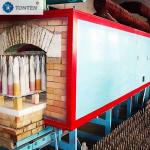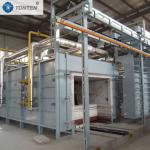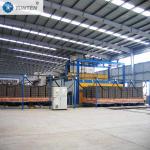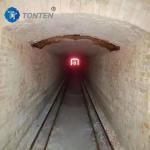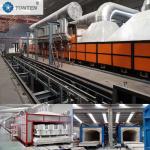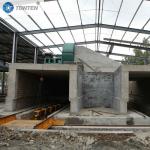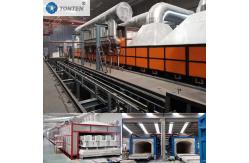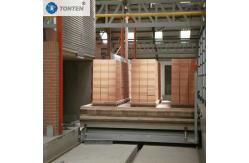Tunnel Kiln Kiln Equipment Gas Automatic Tunnel Kiln Calcined
Push-Plate Kiln Working Principle of Tunnel Kiln
Tunnel kiln is a kind of traditional kiln used for firing ceramics,
bricks and other materials. It works as follows:
1. Loading materials: First of all, the ceramic or brick to be
fired at the entrance of the tunnel kiln is loaded into the kiln.
Usually, there is a roller conveyor belt inside the kiln that
gradually pushes the material into the kiln.
2. Preheating and combustion: After the material enters the kiln,
the combustion chamber of the kiln ignites the fuel, such as
natural gas or oil, to provide the high temperature required for
combustion. The heat generated by combustion will be transferred to
the air and the surface of the material in the kiln, making it
gradually warm up.
3. Heat exchange: there are usually multiple partitions in the
tunnel kiln, which separate the kiln chamber into different areas.
There are holes in the partition, so that the flue gas from the
kiln passes through the kiln chamber next to it, and the material
is heating up for heat exchange. This can improve the efficiency of
heat energy utilization and reduce flue gas emissions.
4. Sintering and firing: With the increase of temperature, the
material gradually reaches the temperature of sintering and firing.
Sintering refers to the process of bonding the particles inside the
material together, while firing is the process of forming a strong
coating on the surface of the material. These two processes usually
require a higher temperature and last a certain amount of time.
5. Cooling and unloading: When the material is finished firing, the
combustion of the kiln will gradually weaken, and the cooling air
will enter the kiln. Cold air passes through the kiln chamber to
gradually cool the fired ceramic or brick, preventing it from
cooling too fast and cracking. Finally, the cooled product is
removed from the kiln. Tunnel kiln Zoning
Tunnel kiln can be divided into pre-zone, firing zone and cooling
zone.
1, preheat accounted for 30-45% of the total length of the kiln,
the temperature range is room temperature ~ 900℃; The body of the
vehicle is in contact with the flue gas produced by the combustion
of the fuel in the firing zone, and is gradually heated to complete
the preheating process of the body.
2, the firing zone accounts for 10-33% of the total length of the
kiln, the temperature range is 900℃ ~ the highest temperature; With
the help of the heat released by the fuel combustion, the billet
reaches the maximum firing temperature required to complete the
firing process of the billet.
3, the cooling belt accounts for 38-46% of the total length of the
kiln, and the temperature range is the highest temperature ~ the
temperature of the product out of the kiln; The high-temperature
products enter the cooling belt and exchange heat with a large
amount of cold air pumped in from the end of the kiln to complete
the cooling process of the billet. Tunnel Kiln Data Table | Serial number | furnace | Theoretical yield | remark | | 1 | 3mx129mOne baked tunnel kiln | 7-10Ten thousand bricks/kiln | Suitable for clay, shale, coal gangue, river mud, paddy soil and
other different types of raw materials
The bricks are sintered. | | 2 | 3mx140mOne baked tunnel kiln | 10-20Brick/kiln | Suitable for clay, shale, coal gangue, river mud, paddy soil and
other different types of raw materials
The bricks are sintered. | | 3 | 3mx119m-Fire a tunnel kiln | 12-20Bricks per day | Suitable for clay, shale, coal gangue, river mud, paddy soil and
other different types of raw materials
The bricks are sintered. | | 4 | 3mx152mOne baked tunnel kiln | 15-20Ten thousand bricks/day | Suitable for clay, shale, coal gangue, river mud, paddy soil and
other different types of raw materials
The bricks are sintered. | | 5 | 4mx164mOne baked tunnel kiln | 18-20Ten thousand bricks/day | Suitable for clay, shale, coal gangue, river mud, paddy soil and
other different types of raw materials
The bricks are sintered. |
|
